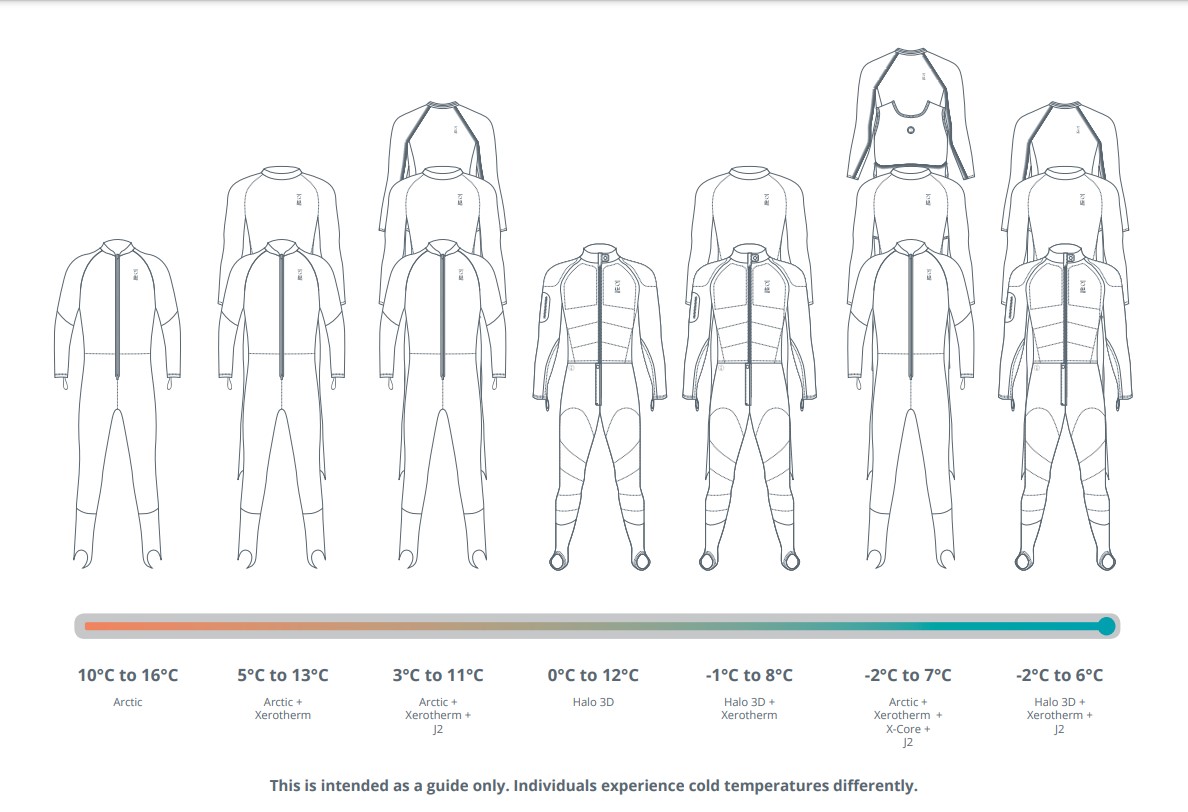Undersuit temperature guideUpdated 4 years ago
Remember that these are only guides as there are so many variables involved, but please get in touch with us if you would like to get some further advice and help buy an undersuit!
These suggestions are based on the membrane or trilaminate drysuits; you can adjust slightly on the thinner or cooler side for a neoprene suit.
20 Degrees Celsius +
You are going to be nice and toasty down there in your drysuit, so you’ll probably only going to need a base layer to wick the moisture away from your skin.
15-20 Degrees Celsius
Average summer UK sea temperature range, so just a little nippy perhaps towards the end of the dive. A good base layer will help keep your skin comfortable and dry, whilst a thin thermal layer should give you ample protection against the cold. You can always go for a slightly thicker thermal layer if you feel cold quickly.
10-15 Degrees Celsius
Things are getting colder now, so you’ll need to choose a thicker thermal layer. Your trusty base layer will continue to do its job, leaving the thermal layer to do all the work of helping to keep you warm. As an upgrade, if you feel the cold, you could swap the base layer for a thin thermal layer but make sure the material has good wicking properties.
5-10 Degrees Celsius
We are into winter UK sea temperatures here. You will almost certainly need two thermal layers, a thinner one (like the Fourth Element Xerotherm) to act as your base layer and a thicker layer for warmth. If you are nearing the bottom of this temperature range, you might also want to consider an extra layer over your body core to help keep your temperature up. As well as the thicker and dual-layer options we mentioned above; you might want to consider something a little more advanced like the Fourth Element Arctic which uses varying layers, materials and thicknesses in different body regions to offer the best insulation solutions. The fourth Element calls this Biomapping and results from lengthy research into body heat loss.
1-5 Degrees Celsius
Layer, layer, layer ….. literally. Plenty of thermal layers is needed here. A good thermal base layer, thick middle layer and perhaps something extra over your core maintains an insulating air gap using anti-compression materials. You can use any combination of different garment types and thicknesses we have mentioned before to achieve something that works for you.
If you feel the cold, you might want to look into something a bit more specialised that take advantage of some pretty exciting materials and designs. The Fourth Element uses a combination of different thicknesses and layers across different regions of the body to create an advanced full undersuit. On top of that, it uses anti-compression materials to maintain the insulating air gaps around your core and makes you look pretty awesome too.
1 Degree Celsius and... Below?!
You need some serious thermal kit from this point on. You might want to consider heated options such as the Thermalution heated vests in addition to the best thermal layers you can get your hands on
